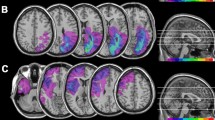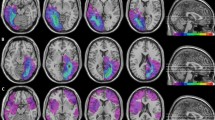Abstract
To investigate inter- and intra-hemispheric electroencephalography (EEG) coherence at rest and during photic stimulation of patients with Alzheimer's disease (AD). Thirty-five patients (12 males, 23 females; 52–64 y) and 33 sex- and age-matched controls (12 males, 21 females; 56–65 y) were recruited in the present study. EEG signals from C3–C4, P3–P4, T5–T6 and O1–O2 electrode pairs resulted from the inter-hemispheric action, and EEG signals from C3–P3, C4–P4, P3–O1, P4–O2, C3–O1, C4–O2, T5–O1 and T6-O2 electrode pairs resulted from the intra-hemispheric action. The influence of inter-and intra-hemispheric coherence on EEG activity with eyes closed was examined, using fast Fourier transformation from the 16 sampled channels. The frequencies of photic stimulation were fixed at 5, 10 and 15 Hz, respectively. The general decrease of AD patients in inter- and intra-hemispheric EEG coherence was more significant than that of the normal controls at the resting EEG, with most striking decrease observed in the alpha-1 (8.0–9.0 Hz) and alpha-2 (9.5–12.5 Hz) bands. During photic stimulation, inter- and intra-hemispheric EEG coherences of the AD patients having lower values in the alpha (9.5–10.5 Hz) band than those of the control group. It suggests that under stimulated and non-stimulated conditions, AD patients had impaired inter- and intra-hemispheric functional connections, indicating failure of brain activation in alpha-related frequency.
Similar content being viewed by others
References
Basar, E., Yordanova, J., Kolev, V., Basar-Eroglu, C., 1997. Is the alpha rhythm a control parameter for brain responses?Boil Cybern,76:471–480.
Beaumont, J.G., Mayes, A.R., Rugg, M.D., 1978. Asymmetry in EEG alpha coherence and power: effects of task and sex.Electroencephalogy Clin. Neurophysiol,45:393–401.
Hogan, M.J., Swanwick, G.R.J., Kaiser, J., Rowan, M., Lawlor, B., 2003. Memory-related EEG power and coherence reduction in mild Alzheimer's disease.Int. J. Psychophysiol,49:147–163.
Jiang, Z.Y., 2002. A study of EEG Photic driving in schizophrenia.Chinese Journal of Nervous and Mental Disease,28(3):198–200 (in Chinese).
Jiang, Z.Y., 2004. The research of diagnosis of Alzheimer's disease based on the coherence analysis of EEG signal.Chinese Journal of Sensor and Actuator,17(3):363–366 (in Chinese).
Kikuchi, M., Wada, Y., Koshino, Y., Nanbu, Y., Hashino, T., 2000. Effects of scopolamine on inter-hemispheric EEG coherence in healthy subjects: analysis during rest and photic stimulation.Electroencephalogr. Clin. Neurophysiol,31:109–115.
Koeda, T., Knyazeva, M., Njiokiktjien, C., Jonkman, E.J., De Sonneville, L., Vildavsky, V., 1995. The EEG in acallosal children. Coherence values in the resting state: left hemisphere compensatory mechanism?Electroencephalogr Clin Neurophysiol,95:397–407.
Politoff, A.L., Monson, N., Hass, P., Stadter, R., 1992. Decreased alpha bandwidth responsiveness to photic driving in Alzheimer disease.Electroencephalogr Clin Neurophysiol,82:45–52.
Schurmann, M., Basar, E., 2001. Functional aspects of alpha oscillations in the EEG.Int. J. Psychophysiol.,39:151–158.
Sloan, E.P., Fenton, G.W., Standage, K.P., 1992. Anticholinergic drug effects on quantitative electroencephalogram, visualevoked potential, and verbal memory.Biol. Psychiatry,31:600–606.
Tucker, D.M., Roth, D.L., Bair, T.B., 1986. Function connections among cortical regions: topography of EEG coherence.Electroencephalogr. Clin. Neurophysiol. 63: 242–250.
Vermersch, P., Scheltens, P., Barkhof, F., Steinling, M., Leys, D., 1994. Evidence for atrophy of the corpus callosum in Alzheimer's disease.Eur. Neurol.,34(2):83–86.
Wada, Y., Nanbu, Y., Jiang, Z.Y., Koshino, Y., Yamaguchi, N., Hashimoto, T., 1997. Electroencephalographic abnormalities in patients with presenile dementia of the Alzheimer type: quantitative analysis at rest and during photic stimulation.Biol. Psychiatry,41:217–225.
Author information
Authors and Affiliations
Additional information
Project supported by the Foundation from the Health Bureau of Zhejiang Province (2004–2005) and the Science & Technology project of Zhejiang Province (2004–2005), China
Rights and permissions
About this article
Cite this article
Zheng-yan, J. Abnormal cortical functional connections in Alzheimer's disease: analysis of inter- and intra-hemispheric EEG coherence. J Zheijang Univ Sci B 6, 259–264 (2005). https://doi.org/10.1007/BF02842462
Received:
Accepted:
Issue Date:
DOI: https://doi.org/10.1007/BF02842462
Key words
- Alzheimer's disease (AD)
- Electroencephalography (EEG)
- Coherence
- Photic stimulation
- Cortical connectivity




